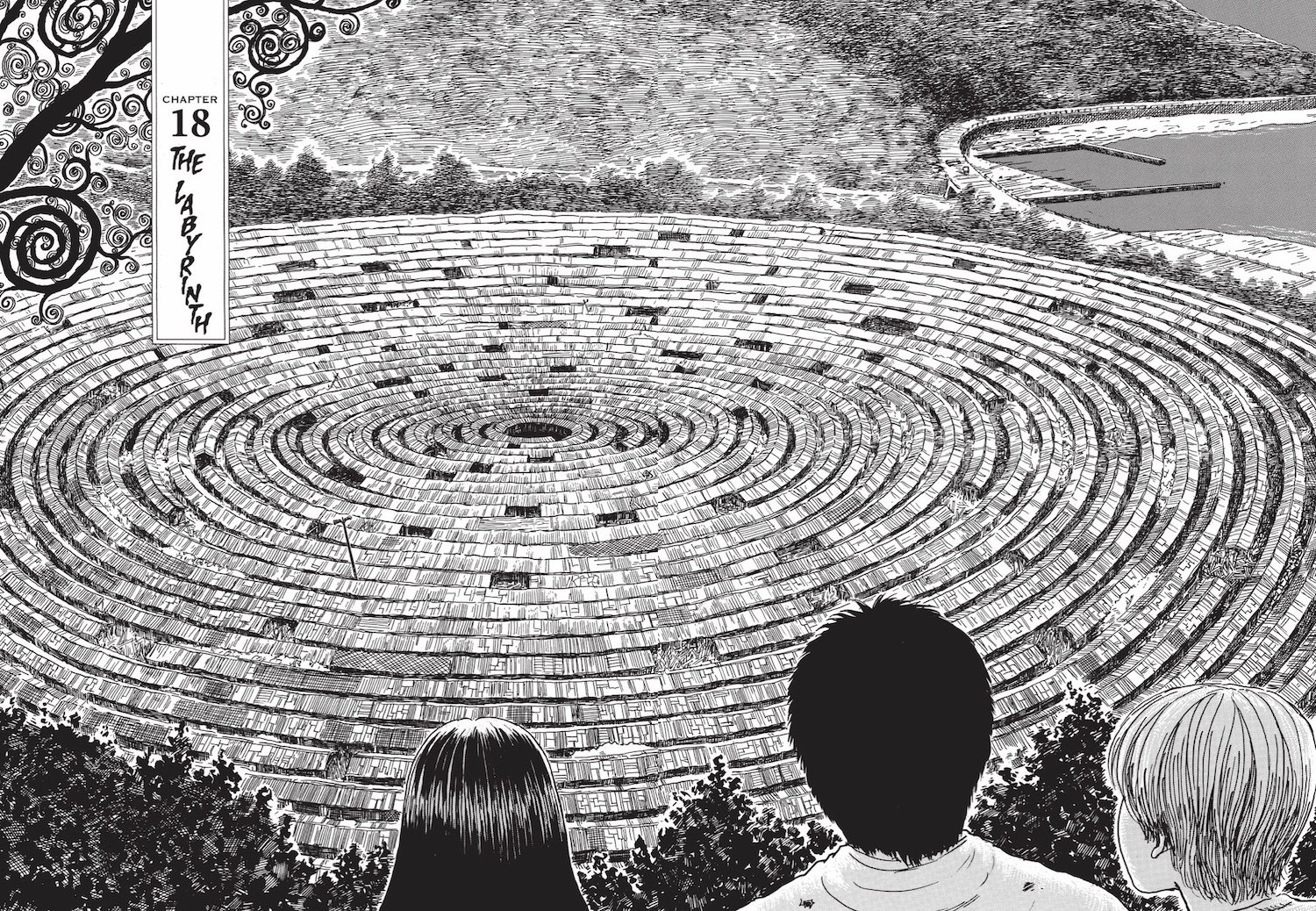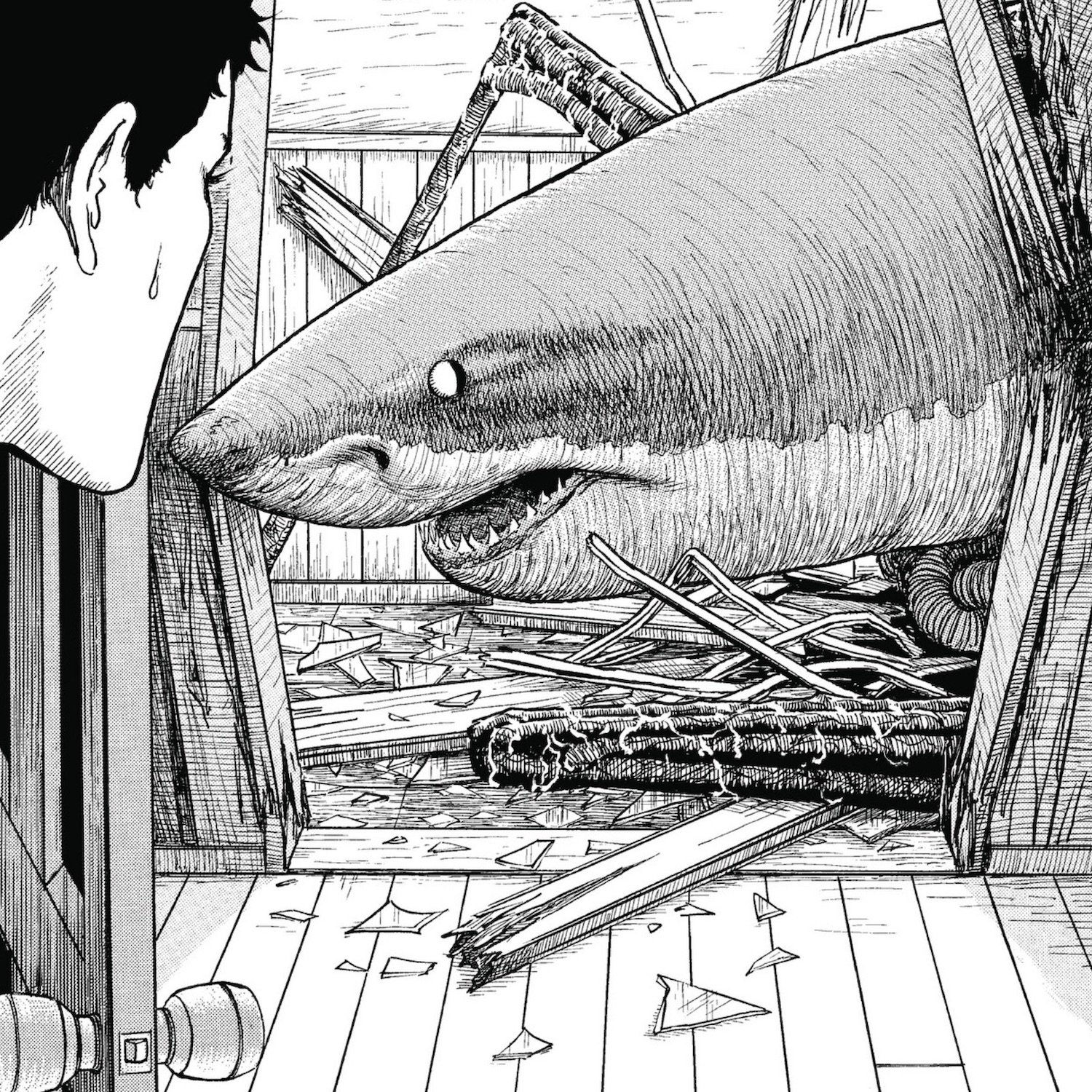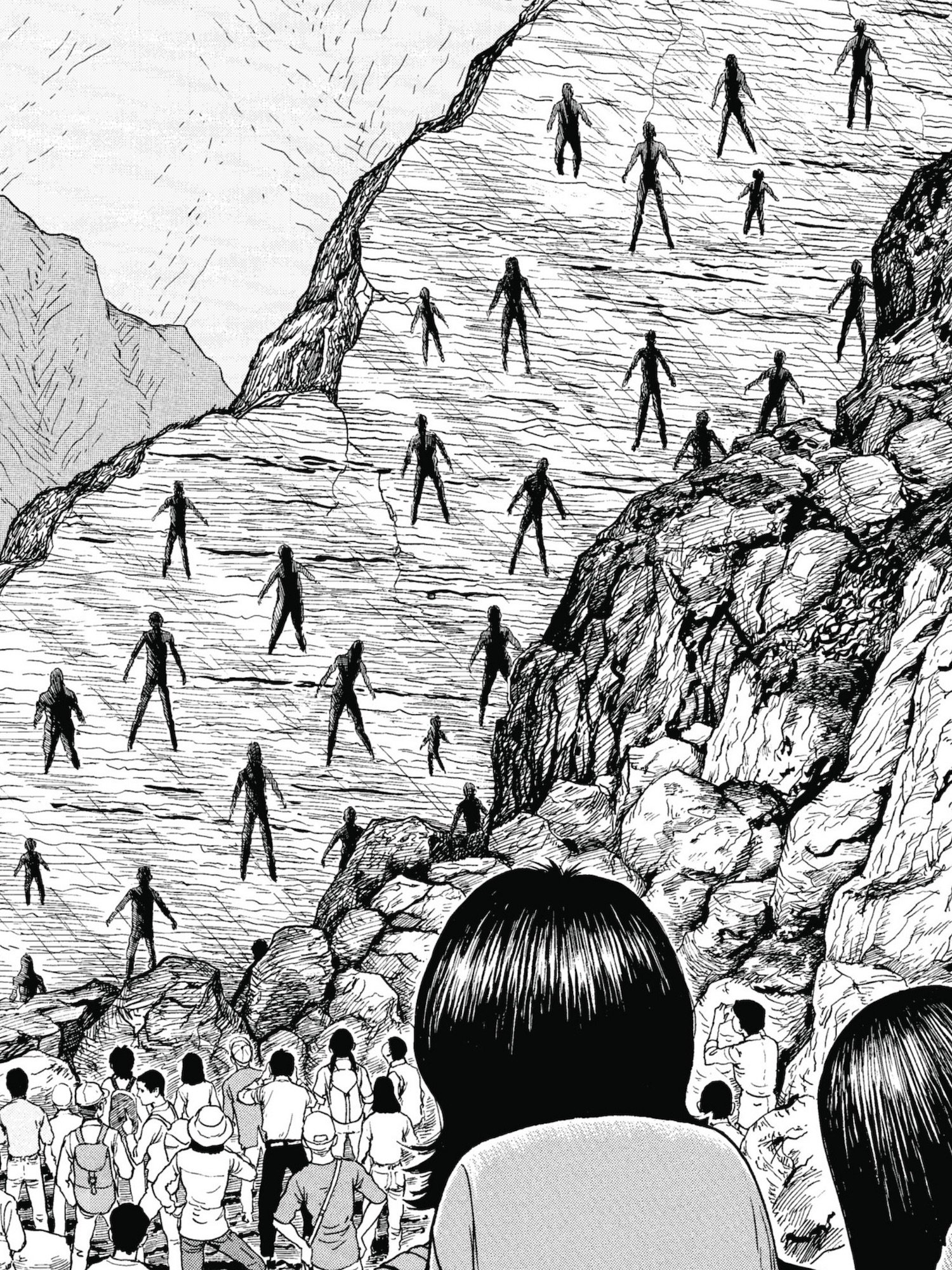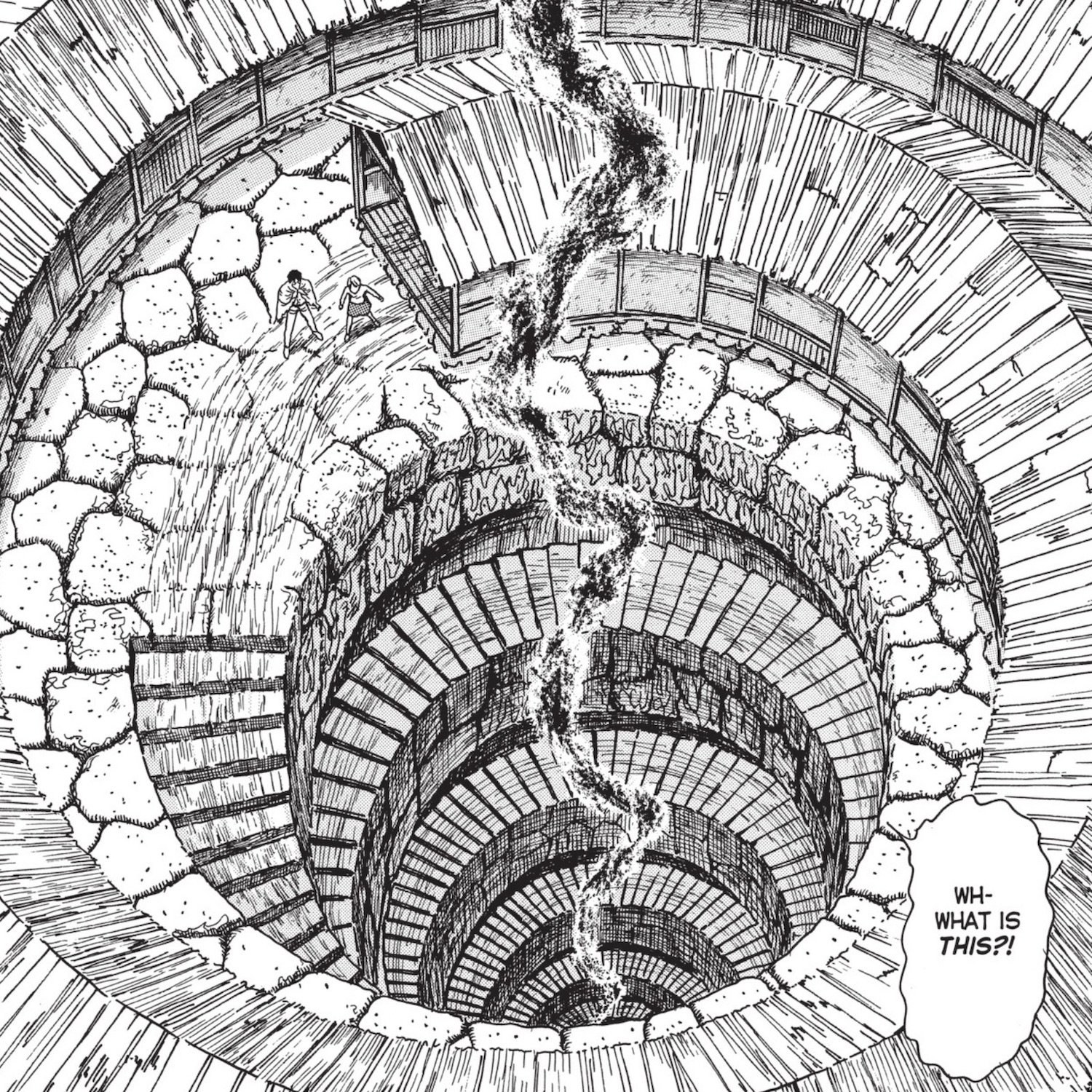The international exposure to horror manga artist Junji Ito looks to continue in 2023, with the release of the Netflix anthology, Junji Ito Maniac: Japanese Tales of the Macabre, and the long-delayed Adult Swim and Production I.G. anime adaptation of Uzumaki. For the latter, a Shinto ceremony was conducted at Hanazono Shrine in Shinjuku, Tokyo, blessing the miniseries and its creators and praying for their stateside success. This is the same shrine that inspired the face of the Disney character Baymax with its bells.
I just penned an article for GaijinPot about “The Western Influences Behind Junji Ito’s Manga Work,” but presumably because it’s a Japan-based site (and therefore not protected by American fair use laws, which enable the use of copyrighted images for commentary purposes), they had to go with stock photos and Creative Commons images in lieu of any of Ito’s actual manga art. If you’re not already familiar with the illustrated material discussed in that article, this might give it the effect of walking into a museum and reading labels on the wall without being able to visually reference the corresponding artwork.
Since The Gaijin Ghost is an offshore site attached to my permanent address in the U.S., I have a little more leeway here, through fair use, to share a few images of Ito’s manga art.
Swimming from ‘Jaws’ to ‘Gyo’
What I wrote for GaijinPot delves first into the influence of Steven Spielberg’s Jaws on Ito’s Gyo, published by VIZ Media in English and Shogakukan in the original Japanese. Jaws made people afraid to go in the water because of sharks, but in Gyo, Ito withdrew the safety net of land, too. The article talks about how, in his manga, a “zombified Great White can follow [swimmers] right onto dry land” and even invade people’s homes, as you can see in the panel above.
In a 2019 interview with Crunchyroll, conducted on-site at the Winchester Mystery House in California, Ito explained:
“The inspiration for [Gyo] is I was scared of sharks. Ever since I saw the Spielberg film Jaws, I was scared of sharks. As long as I don’t go into the ocean, I’m not scared of them, but I thought they’d be even more terrifying if they could come onto shore. So I started with that. Sharks coming to shore. And then I let my imagination run wild and that’s how I ended up with that story.”
This year, I also wrote extensively about Jaws on its anniversary and about its influence on Jordan Peele in his films Us and Nope. In so many ways, Spielberg’s shark is the gift that keeps on giving.
Exploring ‘The Enigma of Amigara Fault’ and ‘Guillermo del Toro’s Cabinet of Curiosities’
I also drew a connection in the article between H.P. Lovecraft’s At the Mountains of Madness and Ito’s “The Enigma of Amigara Fault,” noting how the latter features backpackers who “encounter inexplicable human-shaped holes that stretch a person’s body the deeper one goes into the mountainside.”
There’s some discussion of Ito’s mutual admiration for filmmaker Guillermo del Toro as well. As I write this, I am just coming off a binge of the new Netflix series Guillermo del Toro's Cabinet of Curiosities, which—in addition to maintaining an overall Lovecraftian atmosphere—features two episodes adapted directly from Lovecraft’s stories.
Del Toro retweeted an article of mine this summer, so I may be biased now, but Cabinet of Curiosities scratched the same genre-loving itch for me as the book McSweeney's Enchanted Chamber of Astonishing Stories, edited by Michael Chabon. I think it may seriously be my favorite horror anthology this side of Kwaidan, so I tend to agree with Ito that del Toro is making and/or curating some of the best horror content right now across all mediums.
Spiraling Through the Winchester Mystery House to ‘Uzumaki’
Last but not least, Ito and the Winchester Mystery House go together as swimmingly as manga and The Lighthouse. Ito did illustrate an 8-page manga summary of said Robert Eggers film when it finally made its way to Japanese theaters in a 2021 roadshow presentation. But it’s hardly the first well-known “house” he’s visited, nor are movies the only thing he appreciates about Western culture.
When I first heard (by way of Bleeding Cool) that Ito had toured the Winchester Mystery House, my ears immediately pricked up because I once made a trip there myself. A friend and I were driving down through California and we happened to see the sign for the house from Interstate 280 in San Jose. Suffice it to say, Ito appears to have been given a more all-access, hard-hat tour where he was able to see some areas we didn’t.
Some of the architectural features of the Winchester Mystery House. Clockwise, from top left: the “switchback staircase,” the exterior of the house, a spider web window, a window in the floor, and the view from the top of the house.
Speaking via translator with Crunchyroll interviewer Tim Lyu, Ito elaborated on how he came up with the idea for Uzumaki and how the Winchester Mystery House may have played a part in it on a subconscious level. As he put it:
“It’s a bit strange, just like this Winchester Mystery House. I want[ed] to write about the lives of people living in a strange and bizarre building. It’s a very long building. In Japanese, these structures were called nagaya. I wanted to write the strange stories of people living in that long building. When I was trying to figure out how I wanted the building to look I thought it might be interesting if I drew a very long building in a spiral shape. That’s how I decided on the theme for Uzumaki. In the story, I kept adding onto the nagaya and it just keeps getting longer. But thinking back on it now, I think I just realized that I may have been influenced by the Winchester Mystery House.”
One of the many horrific images in Uzumaki comes when we see people packed into Ito’s spiraling rowhouse so tight that they are twisted all around each other in a writhing mass. It’s the stuff nightmares are made of, but that’s precisely the appeal of Ito’s work.





